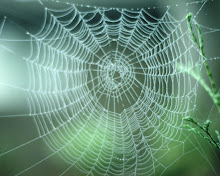The Utah War-KMW
''Vengance is mine saith the Lord.'' I don't think
anyone tried to avoid vengance more than the saints,
and few participated in the massive genocide against
indigenous Americans occuring throughout the US, for
the last 400 years, it peaked in California
during the early goldrush and since Samuel
Brannon had organized an information,
community, shipping, and seperate mail
network [the largest communities were at
Centerville, near Fremont, California and the
Niles Canyon Genocide watershed, the native
population of Ohlone, Indians was reduced from
40,000 Indians to about 300.
[PTA talk, 1970, Muller Grade School.]
A very significant settlement was Jefferson
Davis' settlement at Whittier, because it
was on the main mail route to Mormon
Maritime Trade, immigrant, and mail lines.
The war against Utah was largely bloodless,
and lasted for two years. The Indians didn't
want to stop when Brigham Young said it was
over and thenew, second attempt to seat a new
Governor wascomplete. They liked cattle and
ignored Brigham.
When it was over, Jacob Hamblin was able to
get them to round up what cattle they would
and helped they helped him to restore them
when possible.
This was most sucessfull when the trains
followed all instructions and provisions
from the State and
Church in Utah.
The animacity against the trains was far less
passionate than that of the Genocidal Missourians
most important unanswered question is their
number and connection.
There was a genocide against the Mormons and
Indians, sometimes against the resident Spanish.
The Mountain Meadows Massacre should be taught
as secular rather than religious history, but
it does
ask the pivitol question of our era--when does
mass murder become Genocide.
I beleive the nassacre to have been a mass murder,
triggered by idiocy on the part of a Missouri
militia of undetermined size.
My grandfather said his father always said they
were six to eight in number, but some said the
hired guns were up to 200 in number. Maybe the
number of drunkenbraggarts was few and their role
in triggering the massacre was hard to beleive,
but any oral history does put them at center stage.
My grandfather was bishop of Cedar City for most
of his adult life and he took us to Mountain Meadows
and gave us a complete account of the Massacre
Father was only three when it occurred, living on
Indian dole in the high country, hidden from
the Army.
A pretty blond toddler the tribe wanted to sell
for food instead of feeding them through a
second winter and my GGrandmother through
a second pregnancy.

No comments:
Post a Comment